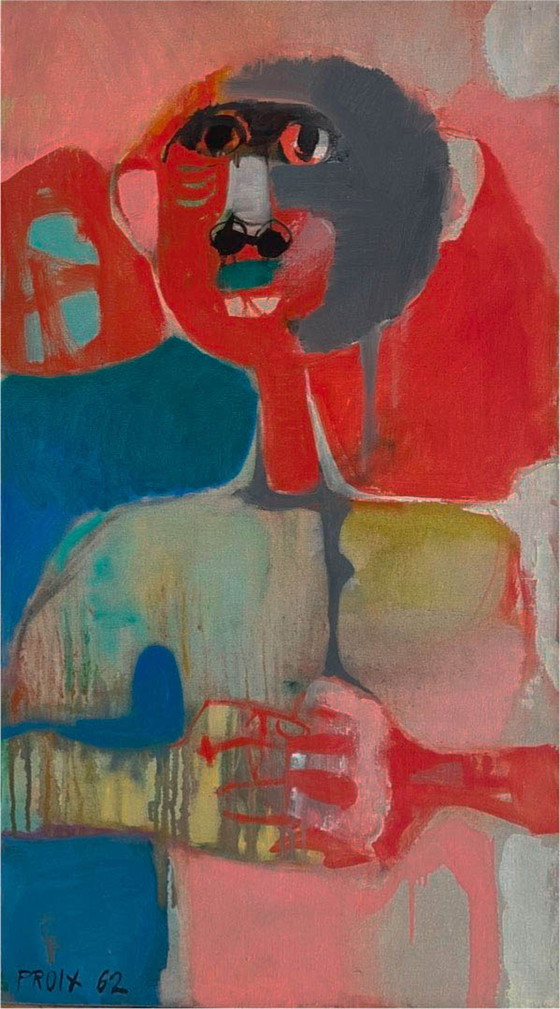Have it delivered hassle-freeBuyer protectionAll items curated by WhoppahDownload the Whoppah app here

Item not as advertised, money backAll items are curated and 100% authenticHave it delivered hassle-free or pick it up yourselfShop only from Trusted Sellers
Business seller
Product description
"Les mains jointes" by Jean Paul Proix 1962
Oil on canvas, signed and dated on front, left side. Gesture and color
The artist's non-figurative period.
Extract from his personal website:
"I belong to a generation whose beacons were Picasso,
Matisse, Kandinsky, Klee and Fernand Léger, whose pupil I was.
A generation preoccupied above all with form, writing and signs
and very little about the subject. It seemed to us that the role of witness to our times was reserved for photography. And for this reason, I gradually
from 1956 onwards towards "non-figurative" art, with preoccupations
Cobra group, until 1969. However, the absence of reference to reality sometimes led to aestheticism.
to aestheticism, I had the feeling of doing the same painting over and over again
and wanted something different. As a reaction, I opted for hyperrealism for quite a long time (a period punctuated, however, by a few bouts of abstraction).
and since 2004, I've felt the need to move towards another form of expression, where the unconscious, gesture and color free themselves from objective representation, my approach becomes more playful and surprises almost daily."
Jean Paul Proix , painter born in Chamalières in 1926
Jean-Paul Proix paints as he breathes, quietly, serenely, voluptuously. He loves life, women and the world,
and you can feel it. He loves painting, and it shows. The first thing that strikes you about his work is the diversity of his subjects (naughty nudes, millimetric still lifes, landscapes both obvious and mysterious).
at once obvious and mysterious, as if between realism and onirism...) and then more by the unity of the work and the look. Simplicity of form, dullness of color, economy of drawing and volume. Yet what strength, what presence, what refinement! The material is flat, almost bare, and all the more evocative
suggestive. We recognize the work of Léger's former pupil, but also that of someone who went through abstraction, only to emerge from it: with him, the vocabulary of forms becomes meaningful again, but without chatter, without anecdote, with something at once monumental and very simple, which gives it its poetry and singularity. André Comte-Sponville 2002
Specifications
ConditionExcellentColorsMulti ColorMaterialCanvasNumber of items1Height91 cmWidth50 cm



